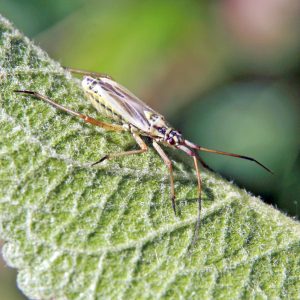
Damsel bugs (or nabids, from the family name Nabidae) are slender, tan-colored bugs that resemble small, smooth-looking assassin bugs or other plant bugs that feed on crops. They generally have large, rounded eyes and long legs. This small family of generalist predators is commonly found in many crop and garden situations. Some other species of damsel bugs are black, but these are less common. Damsel bugs feed on many types of insects. They are predators of aphids, moth eggs, and small caterpillars, including corn earworm, European corn borer, imported cabbageworm and some armyworms. Other prey may include leafhoppers, small sawfly larvae, mites, tarnished plant bug nymphs, and asparagus beetle and Colorado potato beetle eggs and nymphs. They typically eat one egg or aphid per day when small and as many as 1-2 dozen eggs or other prey as later instars and adults. Although they can survive for up to two weeks without food, if no other prey is available they will turn to cannibalism. They use their thickened raptorial front legs that are lined with spines to catch and hold prey, then suck out the body contents with their piercing mouthparts.
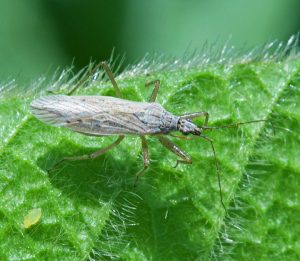
Members of the genus Nabis are the most abundant damsel bugs in crops and gardens. The most common species in Wisconsin are N. americoferus (the most common species in all of North America) and N. roseipennis which are very similar in appearance. They both have one to two generations per year and overwinter as adults. The females deposit their tiny eggs in plant stems or other tissue and the immatures (nymphs) go through five instars before becoming adults.
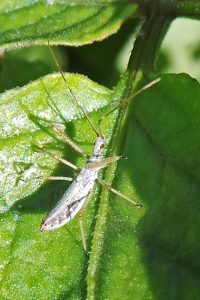
Damsel bugs are attacked by a number of natural enemies themselves, including parasitic tachinid Leucostoma simplex, the mymarid wasp egg parasitoid Polynema boreum, and the entomopathogenic fungus Verticillium lecanii.
Damsel bugs are commonly found in home gardens, where they prefer to take shelter in low growing grasses and ground covers. Maintaining such environments will encourage these predators, although the impact of damsel bugs in reducing pest damage in the home landscape is not known.
– Susan Mahr, University of Wisconsin – Madison
Ask Your Gardening Question
If you’re unable to find the information you need, please submit your gardening question here:





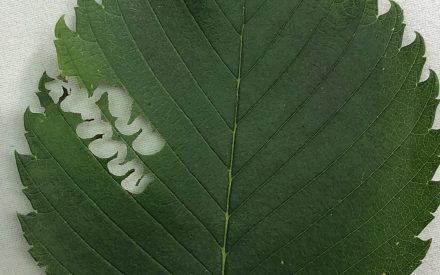 Elm Zigzag Sawfly
Elm Zigzag Sawfly ▶ Watch: How do Pesticides Affect Pollinators and Songbirds in Your Yard
▶ Watch: How do Pesticides Affect Pollinators and Songbirds in Your Yard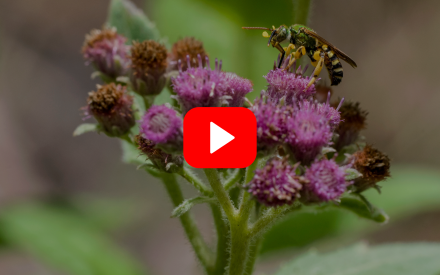 ▶ Watch: Pollinator Gardens: Plant Selection and Garden Care
▶ Watch: Pollinator Gardens: Plant Selection and Garden Care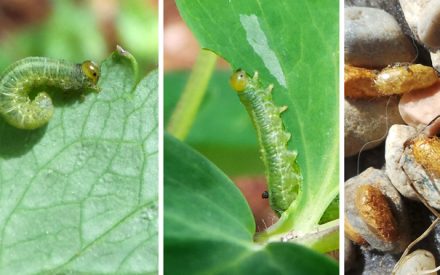 Strategies for Identifying and Managing Insect Pests
Strategies for Identifying and Managing Insect Pests


